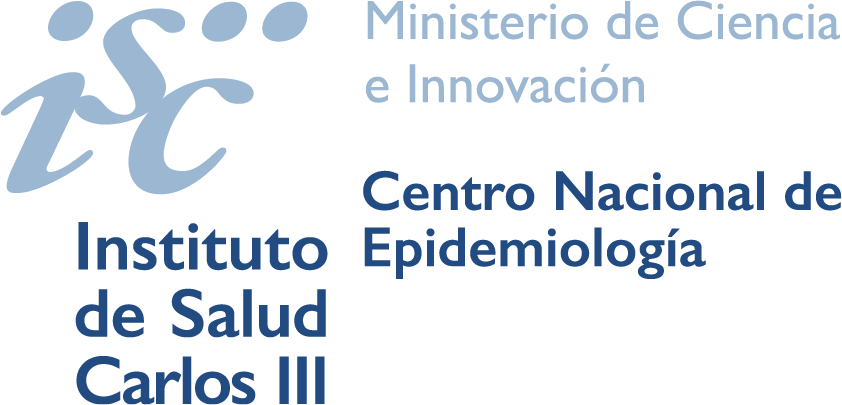Epidemiological characteristics of non-food borne outbreaks in Spain, 2018-2022
DOI:
https://doi.org/10.4321/s2173-92772025000200005Keywords:
outbreaks; non-foodborne outbreaks; Epidemiological analysis; SpainAbstract
Introduction: Outbreaks are a major public health problem. Early outbreak detection and investigation are key to implement the most effective measures. This study aims to describe the non-foodborne outbreaks reported to the Spanish National Surveillance System in the 2018-2022 period.
Method: A descriptive study was conducted by disease group and causative agent of non-foodborne outbreaks (excluding healthcare associated infections and COVID-19 outbreaks) between 2018 and 2022.
Results: A total of 3,858 outbreaks were reported, with 45,140 associated cases, 2,205 hospitalizations and 181 deaths. The main diseases causing outbreaks were gastrointestinal diseases (n=1,076 outbreaks), followed by vaccine-preventable diseases (n=795) and infestations (scabies and lice) (n=734). The highest number of hospitalizations was due to respiratory diseases and legionellosis (872 and 428, respectively). The number of reported outbreaks decreased in 2020, but a progressive increase was observed from 2021 onwards, approaching the pre-COVID-19 pandemic levels, with important differences depending on the disease. The main exposure setting was the household (1,507 outbreaks), followed by nursing homes (816 outbreaks). The Autonomous Regions did not report outbreaks uniformly during the study period.
Discussion: Analysis of the data shows the disruption of epidemiological surveillance caused by the COVID-19 pandemic. Outbreak surveillance helps guide prevention and control measures and it makes possible to assess the epidemiological situation of some diseases for which case-based surveillance is not implemented.
Downloads
References
España. Real Decreto 2210/1995, de 28 de diciembre, por el que se crea la red nacional de vigilancia epidemiológica. (Boletín Oficial del Estado núm. 21, de 24 de enero de 1996). Disponible en: https://www.boe.es/eli/es/rd/1995/12/28/2210/con.
Centro Nacional de Epidemiología. Instituto de Salud Carlos III. Red Nacional de Vigilancia Epidemiológica. Protocolos de la Red Nacional de Vigilancia Epidemiológica. Madrid, 2013. Disponible en: https://cne.isciii.es/documents/d/cne/protocolos_renave-ciber-pdf-1. Acceso 18/03/2025.
Instituto Nacional de Estadística (INE), Ministerio de Economía, Comercio y Empresa. Disponible en: https://www.ine.es.
Sanz-Olea E, Peñuelas M, Guerrero-Vadillo M, et al. Brotes de transmisión alimentaria e hídrica en España, 2018-2022. Boletín Epidemiológico Semanal 2024; 32: 61–73.
Centro Nacional de Epidemiología. CIBERESP. ISCIII. Brote de tosferina España 2023-2024. Datos provisionales a 10 de diciembre de 2024. Madrid, diciembre 2024. Disponible en: https://cne.isciii.es/documents/d/cne/brote_tosferina_2023-2024_10-diciembre-de-2024. Acceso 21/04/2025.
Centro Nacional de Epidemiología. CIBERESP. ISCIII. Informe epidemiológico sobre la situación de la parotiditis en España, 2005-2023. Madrid, noviembre 2024. Disponible en: https://repisalud.isciii.es/rest/api/core/bitstreams/fee8247b-d780-45d3-82ca-1ed38b939dee/content. Acceso 21/04/2025.
Guerrero-Vadillo M, Peñuelas M, Varela C. Situación epidemiológica de la hepatitis A en España. Años 2021 y 2022. BES 2023; 31: 243–252.
Yun HE, Ryu BY, Choe YJ. Impact of social distancing on incidence of vaccine-preventable diseases, South Korea. J Med Virol 2021; 93: 1814–1816.
Bhatt P, Strachan J, Easton M, et al. Effect of COVID-19 restrictions and border closures on vaccine preventable diseases in Victoria, Australia, 2020-2021. Commun Dis Intell (2018); 46. Epub ahead of print 19 May 2022. DOI: 10.33321/cdi.2022.46.29.
Unidad de vigilancia de VIH, ITS y hepatitis B y C. Vigilancia epidemiológica de las infecciones de transmisión sexual, 2022. Centro Nacional de Epidemiología, Instituto de Salud Carlos III/División de Control de VIH, ITS, Hepatitis virales y Tuberculosis, Dirección General de Salud Pública; 2024. Disponible en: https://cne.isciii.es/documents/d/cne/informe_vigilancia_its_2022-pdf-1. Acceso 06/09/2024.
Love NK, Douglas A, Gharbia S, et al. Understanding the impact of the COVID-19 pandemic response on GI infection surveillance trends in England, January 2020-April 2022. Epidemiol Infect 2023; 151: e147.
Organización Mundial de la Salud (OMS). 2022. Noticias sobre brotes de enfermedades. Aumento de la incidencia de la escarlatina y de infecciones invasivas por estreptococos del grupo A en varios países. Disponible en: https://www.who.int/es/emergencies/disease-outbreak-news/item/2022-DON429. Acceso 05/09/2024.
Organización Mundial de la Salud (OMS). 2023. Sarna. Disponible en: https://www.who.int/es/news-room/fact-sheets/detail/scabies. Acceso 06/09/2024.
Redondo-Bravo L, Fernandez-Martinez B, Gómez-Barroso D, et al. Scabies in Spain? A comprehensive epidemiological picture. PLoS One 2021; 16: e0258780.
Lluch-Galcerá JJ, Carrascosa JM, Boada A. Epidemic Scabies: New Treatment Challenges in an Ancient Disease. Actas Dermosifiliogr 2023; 114: 132–140.
Cano Portero R, Martín-Mesonero C, Amillategui-Dos-Santos R. Estudio epidemiológico de la legionelosis en España. Año 2022. Boletín Epidemiológico Semanal. 2023;31(3):190-200. doi: 10.4321/s2173-92772023000300004.
Pampaka D, Gómez-Barroso D, López-Perea N, et al. Meteorological conditions and Legionnaires’ disease sporadic cases-a systematic review. Environ Res 2022; 214: 114080.
Moffa MA, Rock C, Galiatsatos P, et al. Legionellosis on the rise: A scoping review of sporadic, community-acquired incidence in the United States. Epidemiol Infect 2023; 151: e133.
Kambhampati AK, Wikswo ME, Barclay L, et al. Notes from the Field: Norovirus Outbreaks Reported Through NoroSTAT - 12 States, August 2012-July 2022. MMWR Morb Mortal Wkly Rep 2022; 71: 1222–1224.
BERNARD H, HÖHNE M, NIENDORF S, et al. Epidemiology of norovirus gastroenteritis in Germany 2001–2009: eight seasons of routine surveillance. Epidemiol Infect 2014; 142: 63–74.
Downloads
Published
How to Cite
Issue
Section
License
Copyright (c) 2025 María Guerrero, Marina Peñuelas, Rosa Cano Portero, Carmen Varela

This work is licensed under a Creative Commons Attribution-NonCommercial-ShareAlike 4.0 International License.
El material creado por un autor puede ser distribuido, copiado y exhibido por terceros si se hace referencia a la autoría. No se puede obtener ningún beneficio comercial y las obras derivadas tienen que estar bajo los mismos términos de licencia que el trabajo original


